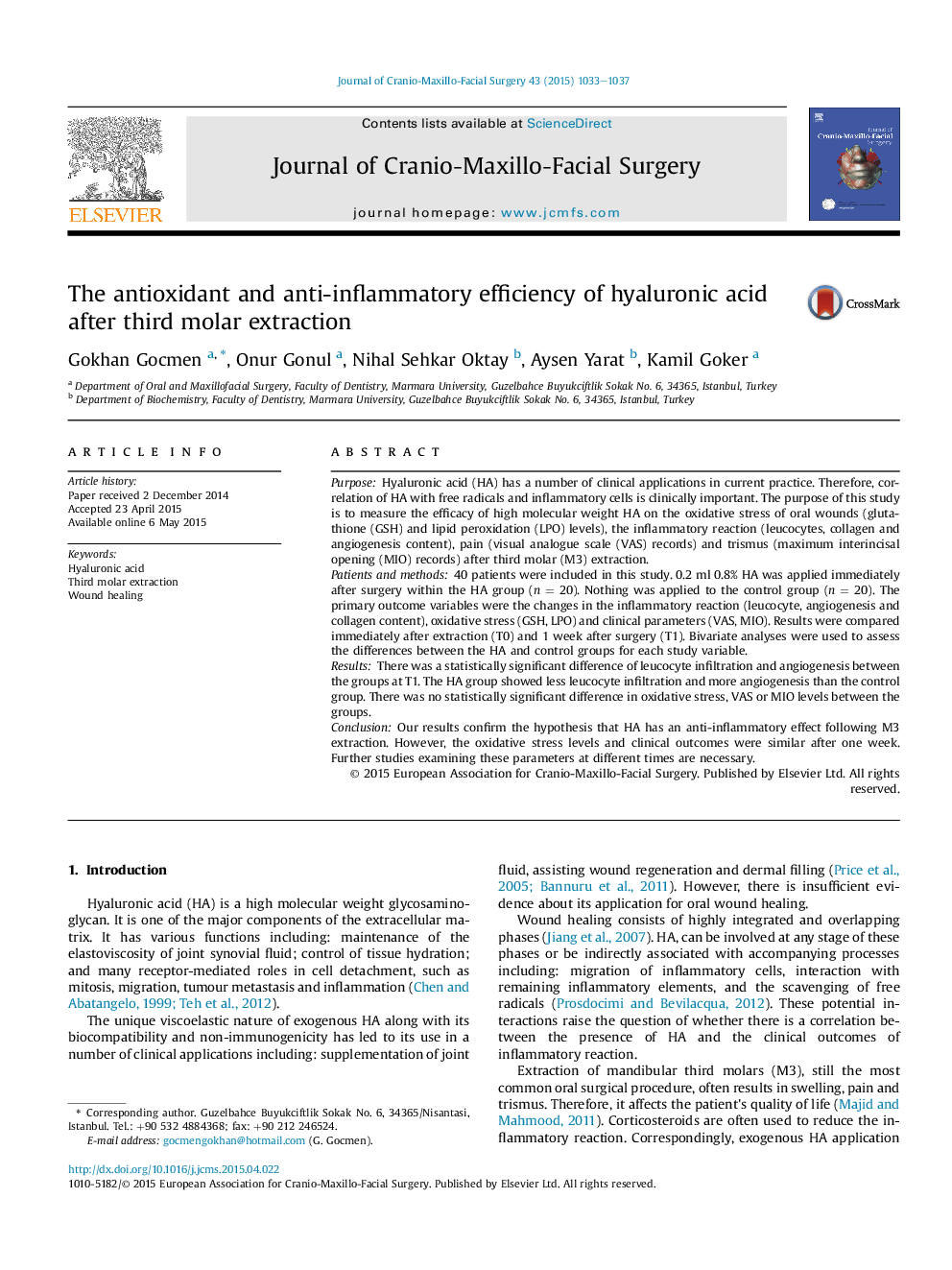| Article ID | Journal | Published Year | Pages | File Type |
|---|---|---|---|---|
| 3142336 | Journal of Cranio-Maxillofacial Surgery | 2015 | 5 Pages |
PurposeHyaluronic acid (HA) has a number of clinical applications in current practice. Therefore, correlation of HA with free radicals and inflammatory cells is clinically important. The purpose of this study is to measure the efficacy of high molecular weight HA on the oxidative stress of oral wounds (glutathione (GSH) and lipid peroxidation (LPO) levels), the inflammatory reaction (leucocytes, collagen and angiogenesis content), pain (visual analogue scale (VAS) records) and trismus (maximum interincisal opening (MIO) records) after third molar (M3) extraction.Patients and methods40 patients were included in this study. 0.2 ml 0.8% HA was applied immediately after surgery within the HA group (n = 20). Nothing was applied to the control group (n = 20). The primary outcome variables were the changes in the inflammatory reaction (leucocyte, angiogenesis and collagen content), oxidative stress (GSH, LPO) and clinical parameters (VAS, MIO). Results were compared immediately after extraction (T0) and 1 week after surgery (T1). Bivariate analyses were used to assess the differences between the HA and control groups for each study variable.ResultsThere was a statistically significant difference of leucocyte infiltration and angiogenesis between the groups at T1. The HA group showed less leucocyte infiltration and more angiogenesis than the control group. There was no statistically significant difference in oxidative stress, VAS or MIO levels between the groups.ConclusionOur results confirm the hypothesis that HA has an anti-inflammatory effect following M3 extraction. However, the oxidative stress levels and clinical outcomes were similar after one week. Further studies examining these parameters at different times are necessary.
